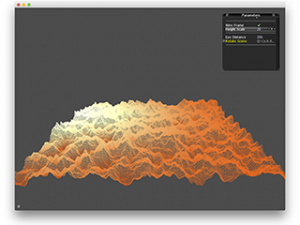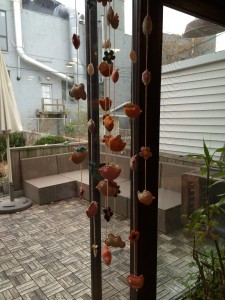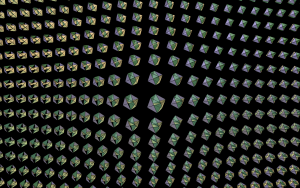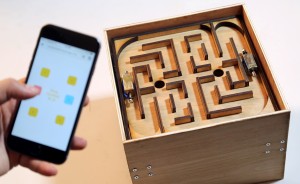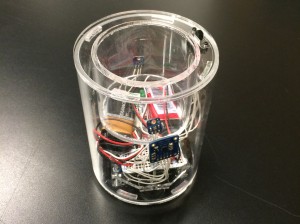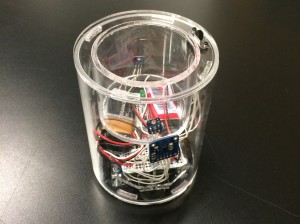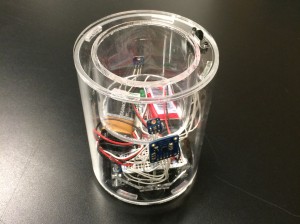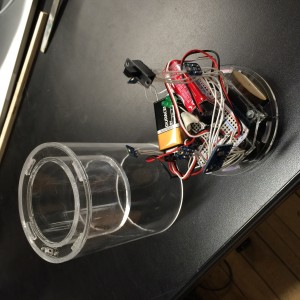Jiashan Wu
Snoopi the dog sniffs out information and digital footprints from devices/people around him and visualizes them in real time. <br />
http://itp.fromjia.com/?p=342
Description
Culturally we are at a place where the ramifications of having data shouted out over wireless network has largely remained unseen. With Snoopi I want to start the conversation surrounding simple, benevolent acts and data collection and profiling. The question is: why does this matter? Should we care that we are leaking breadcrumbs of data from our intimate devices? Norms of our attitude towards data and data collection is still being formed. I hope to bring up questions and awareness about this topic to more people.
Dressed in a hoodie equipped with a Raspberry Pi running Surya's NSHeyy sniffer program, Snoopi the dog sniffs out information from surrounding devices. Information includes the origin of devices, their wifi router history (which allows tracking a user's location history), unique mac addresses, and their relative distance to Snoopi. When Snoopi's hoodie is on, an LCD screen lights up, displaying sniffed wifi history information.
On a computer nearby, sniffed data is visualized in real time. This visualization allows viewers to look at individual device information, see connections between devices (whether they have been connected to the same wifi network), and aggregate information about the devices/people in the area.
For the show, Snoopi can be substituted by a stuffed animal on a roomba or another autonomous vehicle. Depending on where Snoopi is, the visualization will update in real time to give viewers an idea of the type of people in the room as well as information about individuals in the room.
Classes
Introduction to Computational Media, Introduction to Physical Computing




